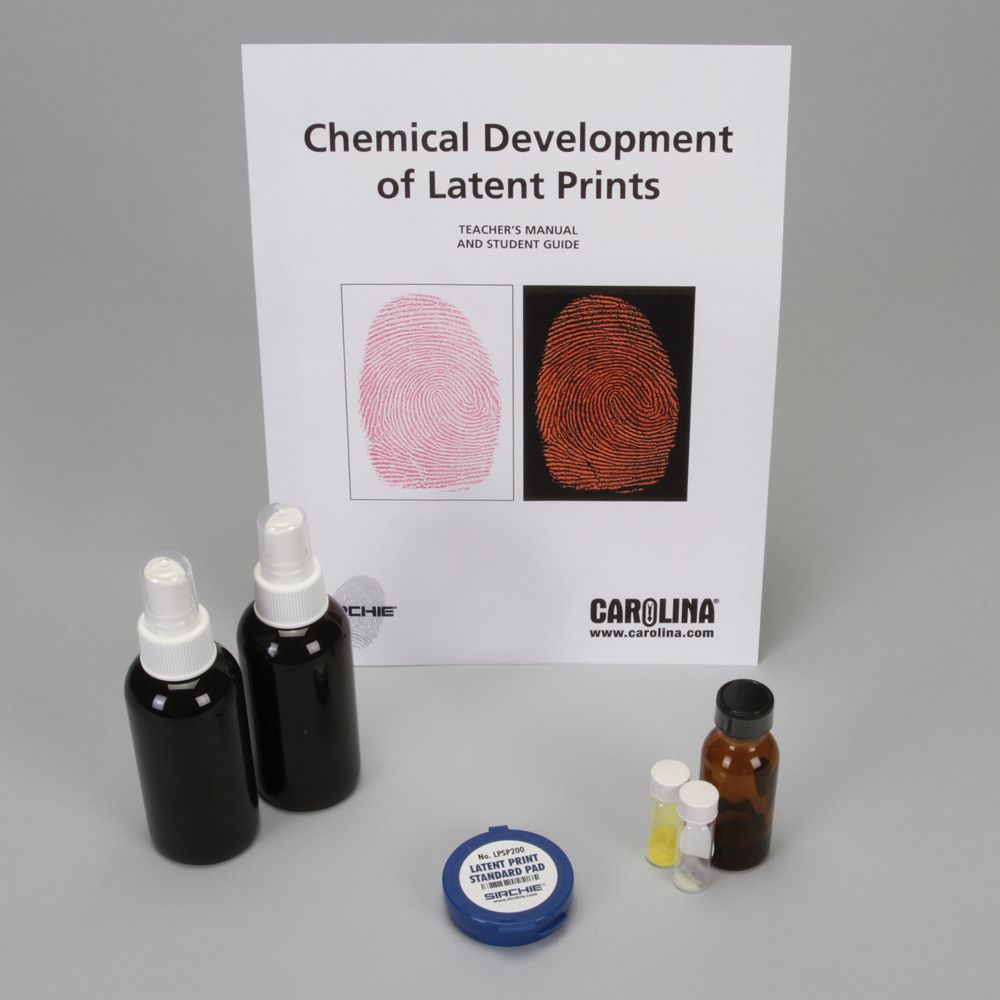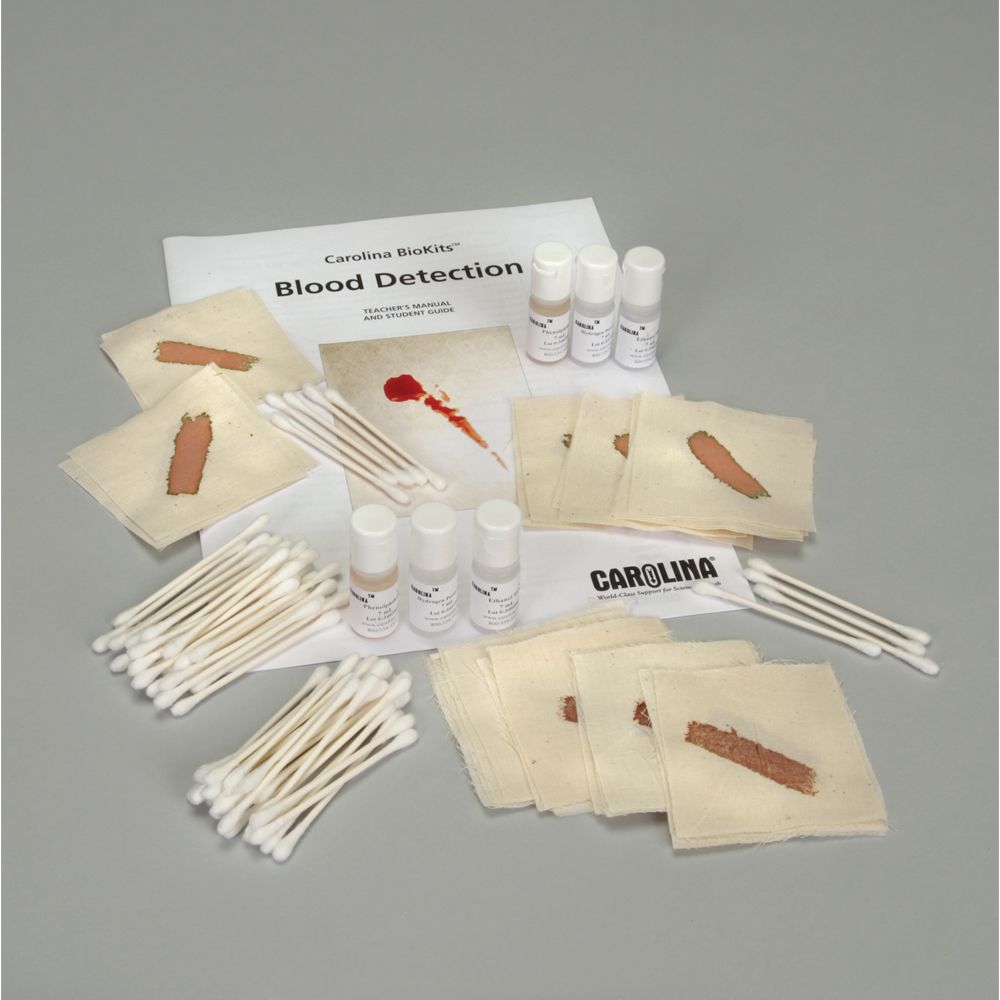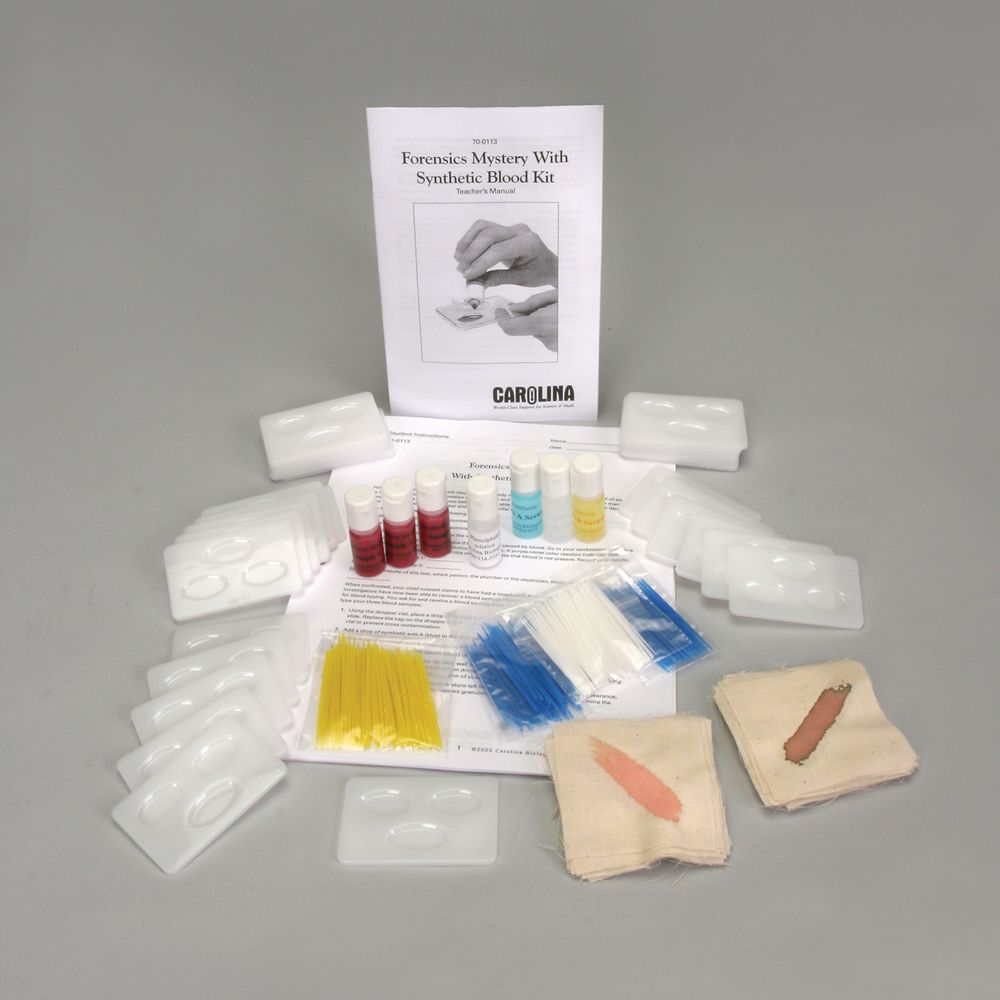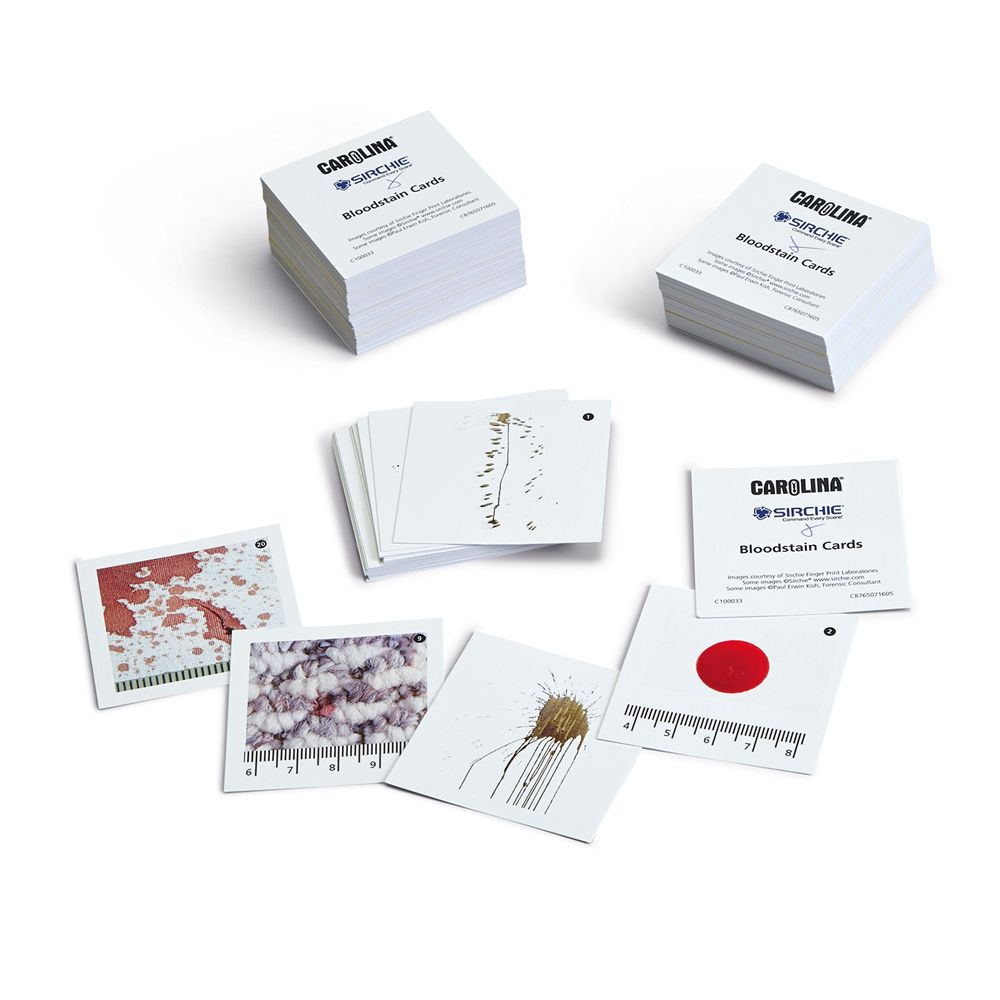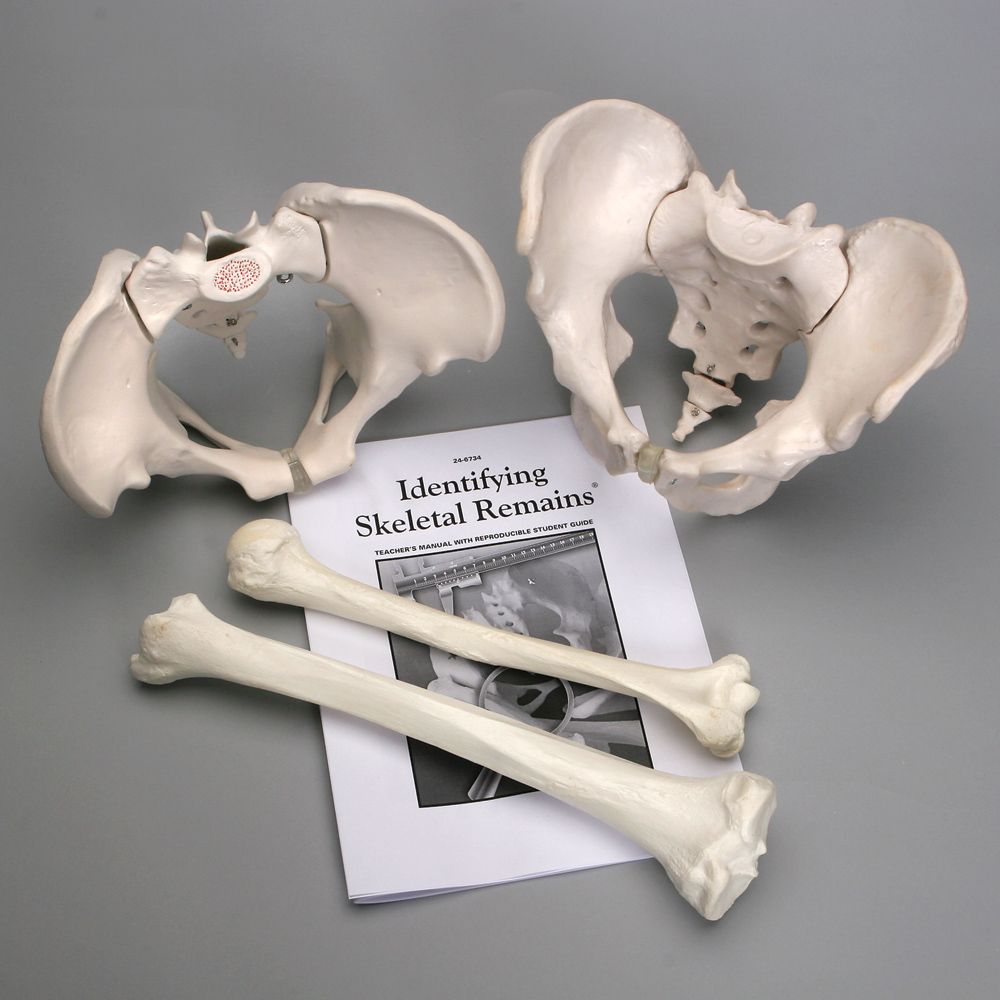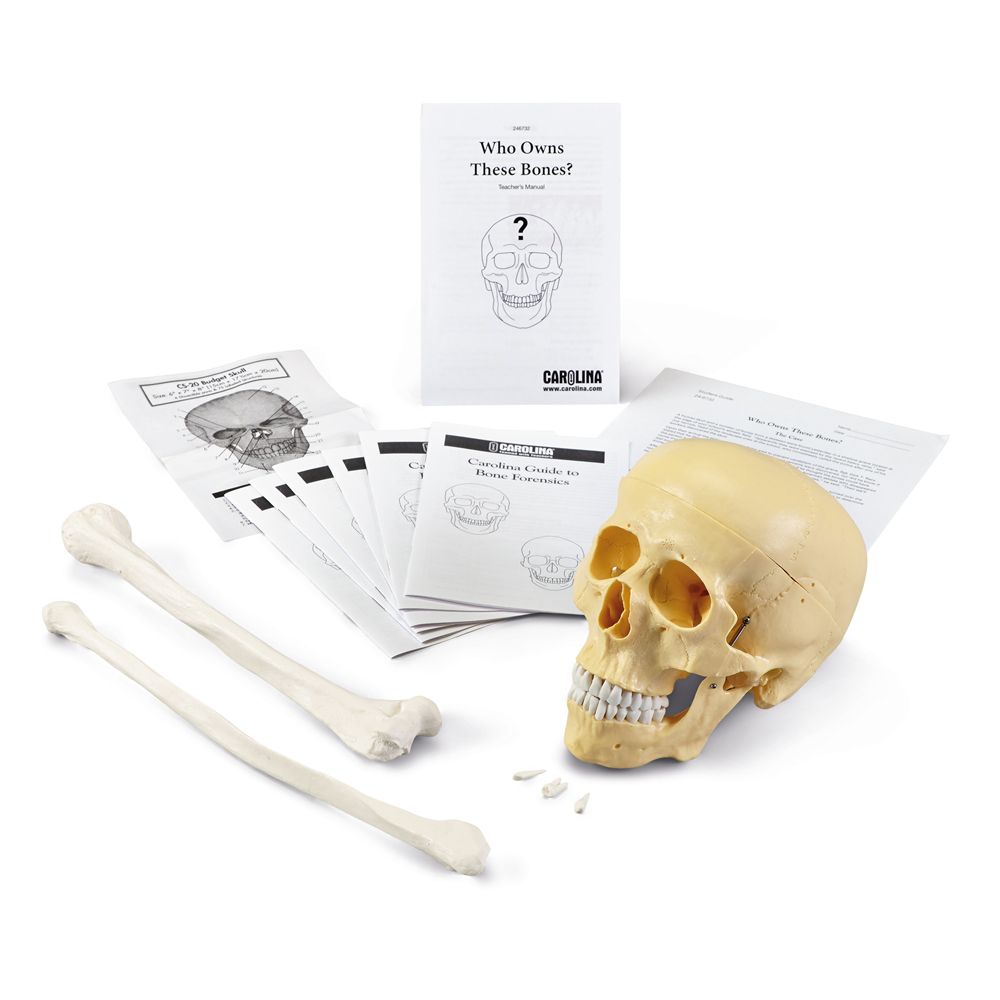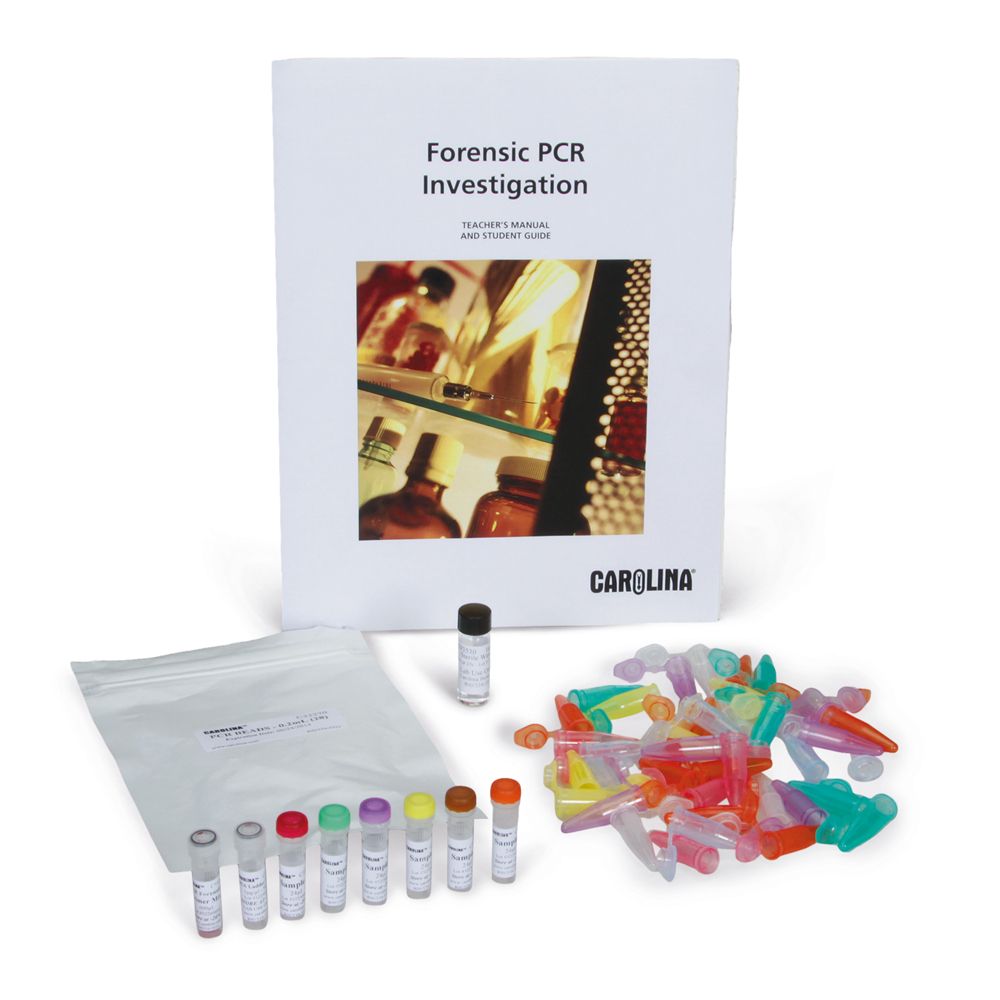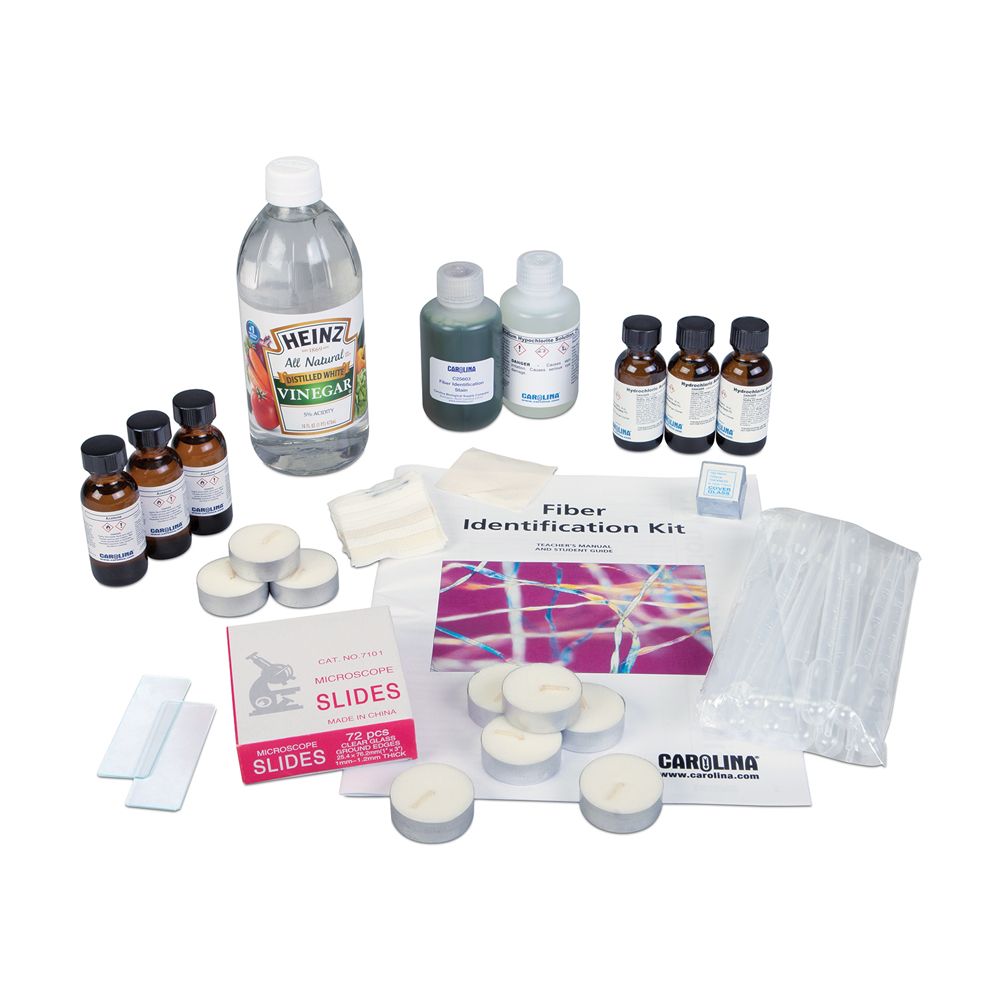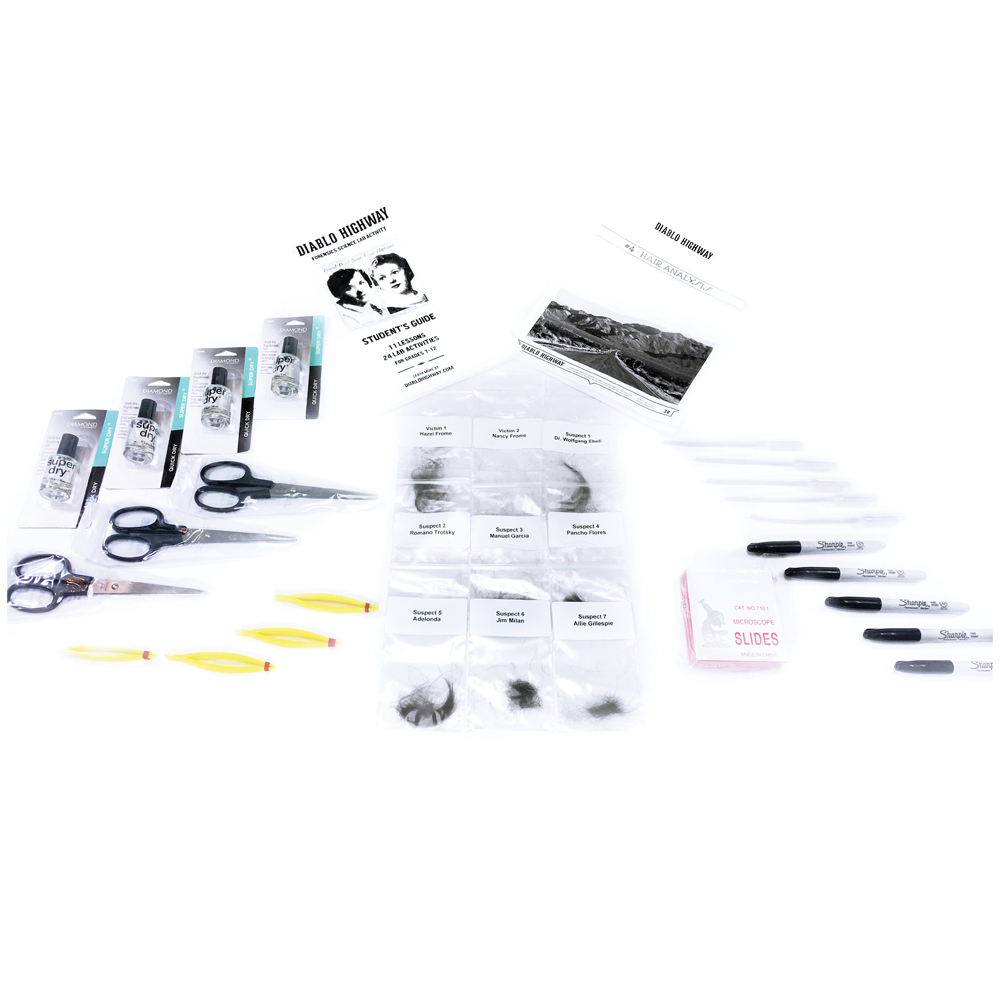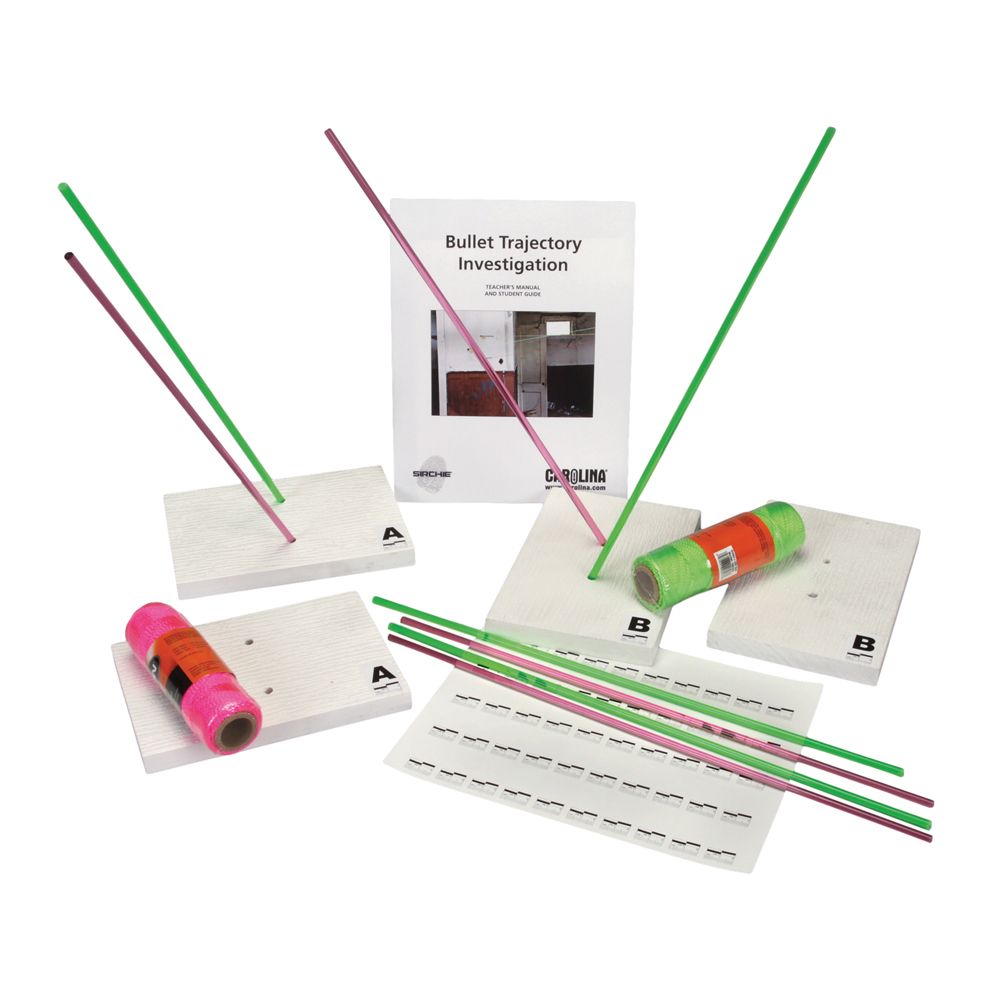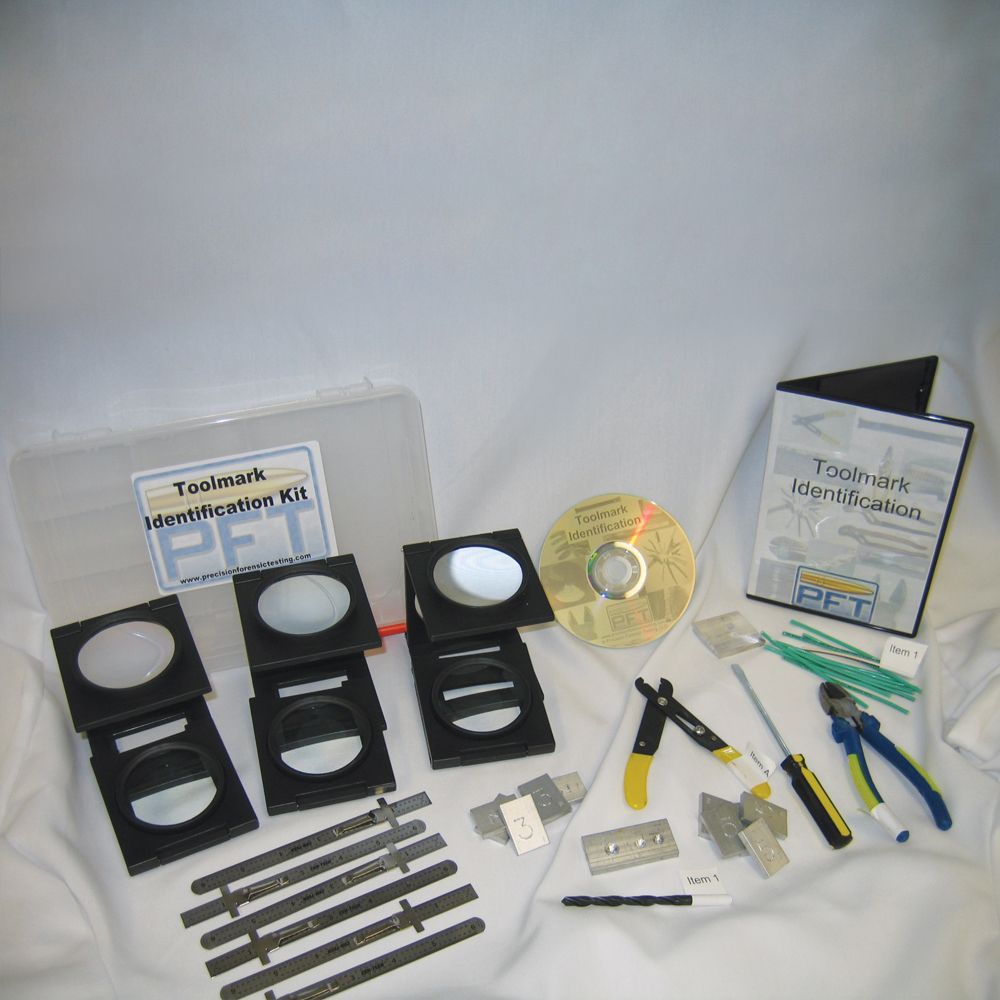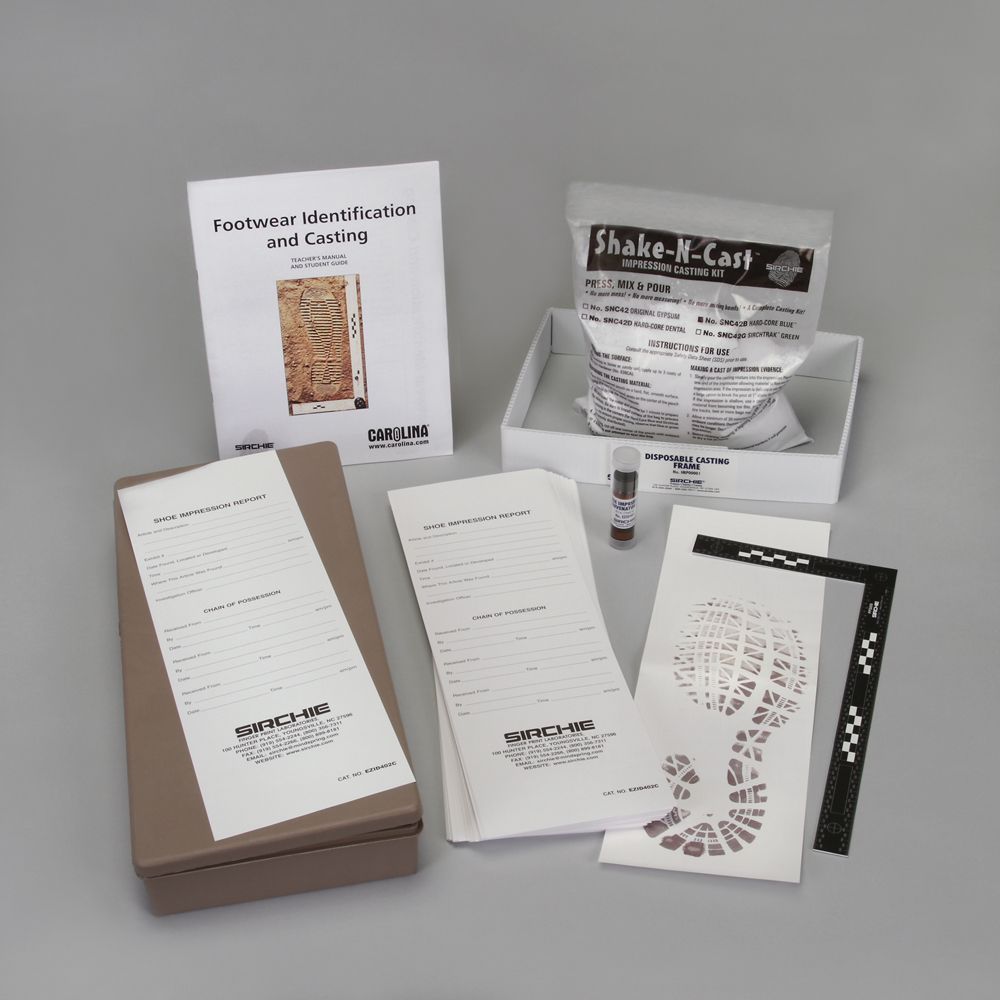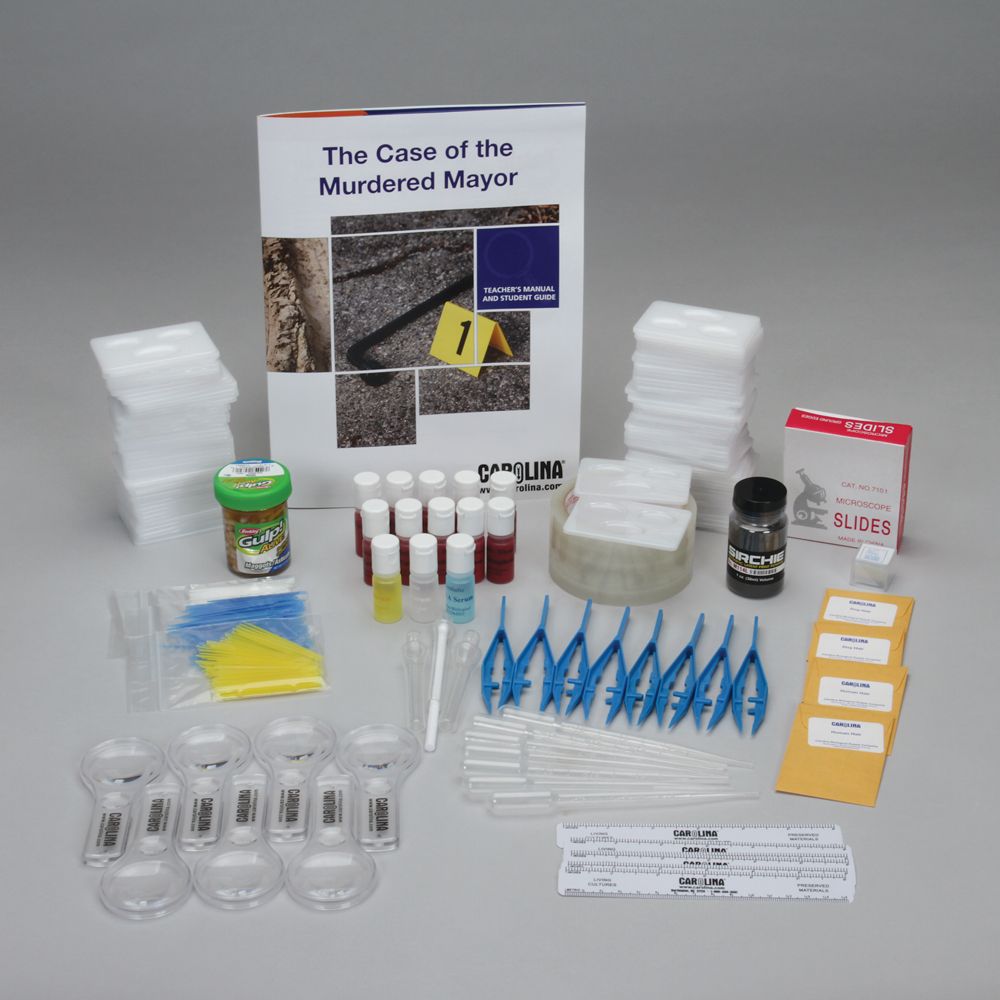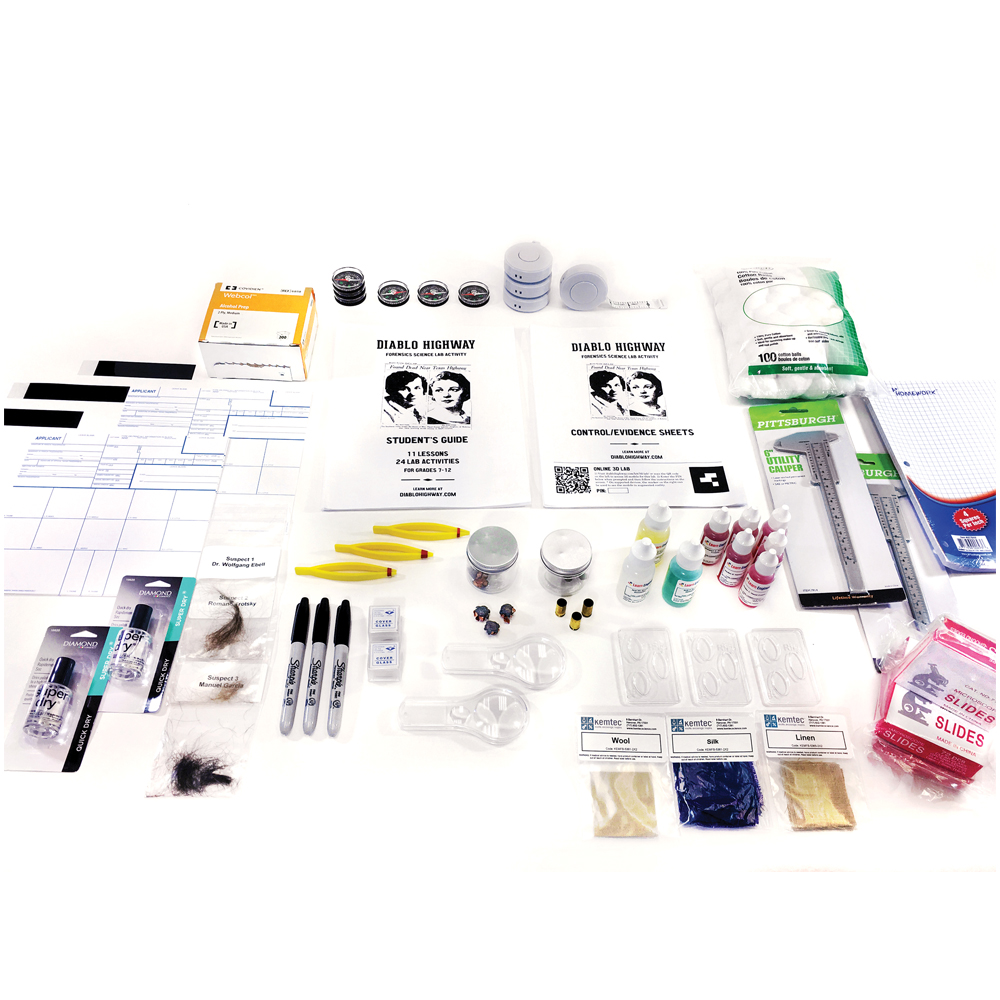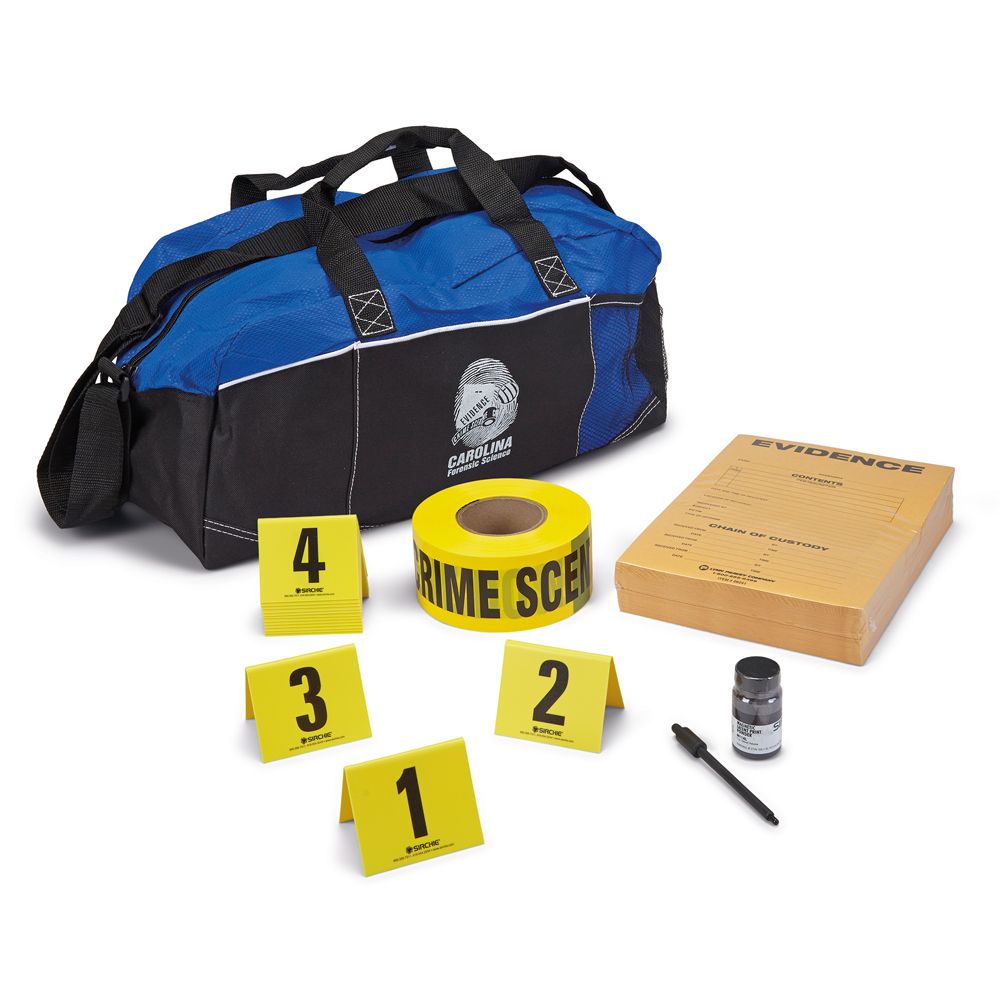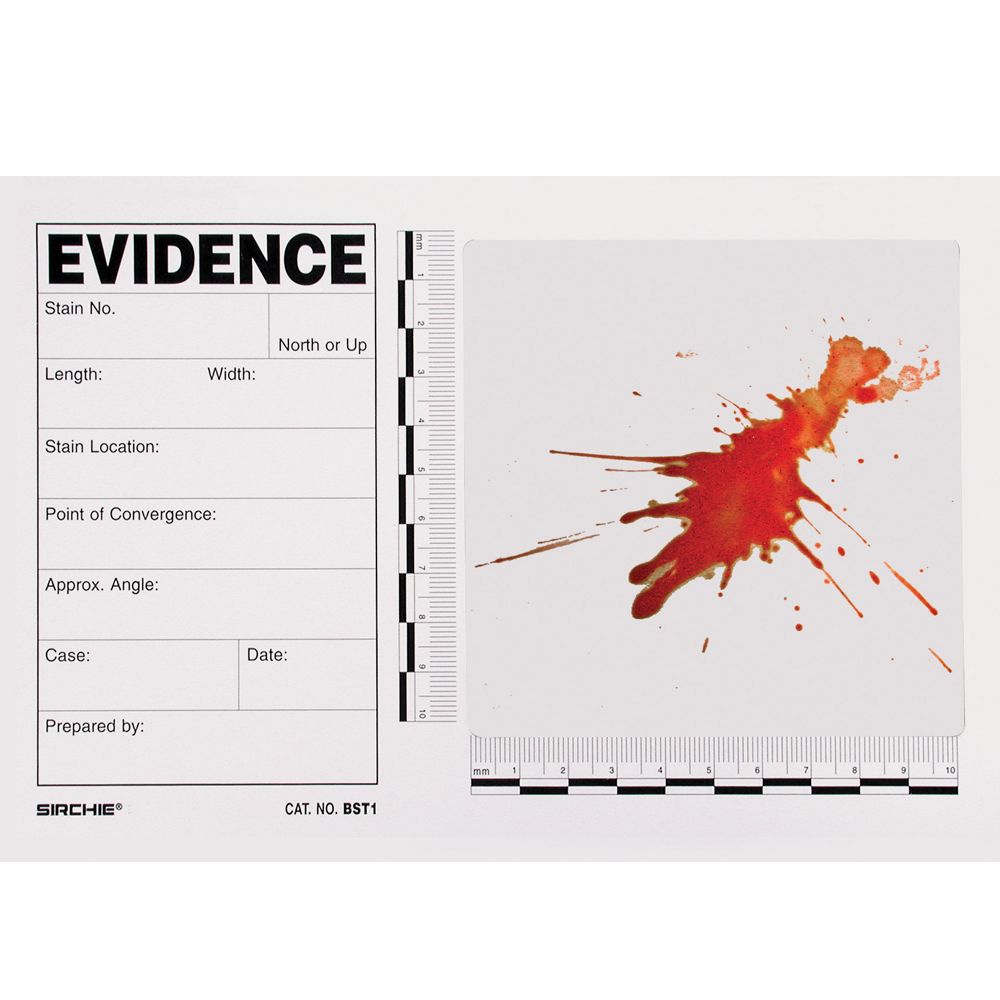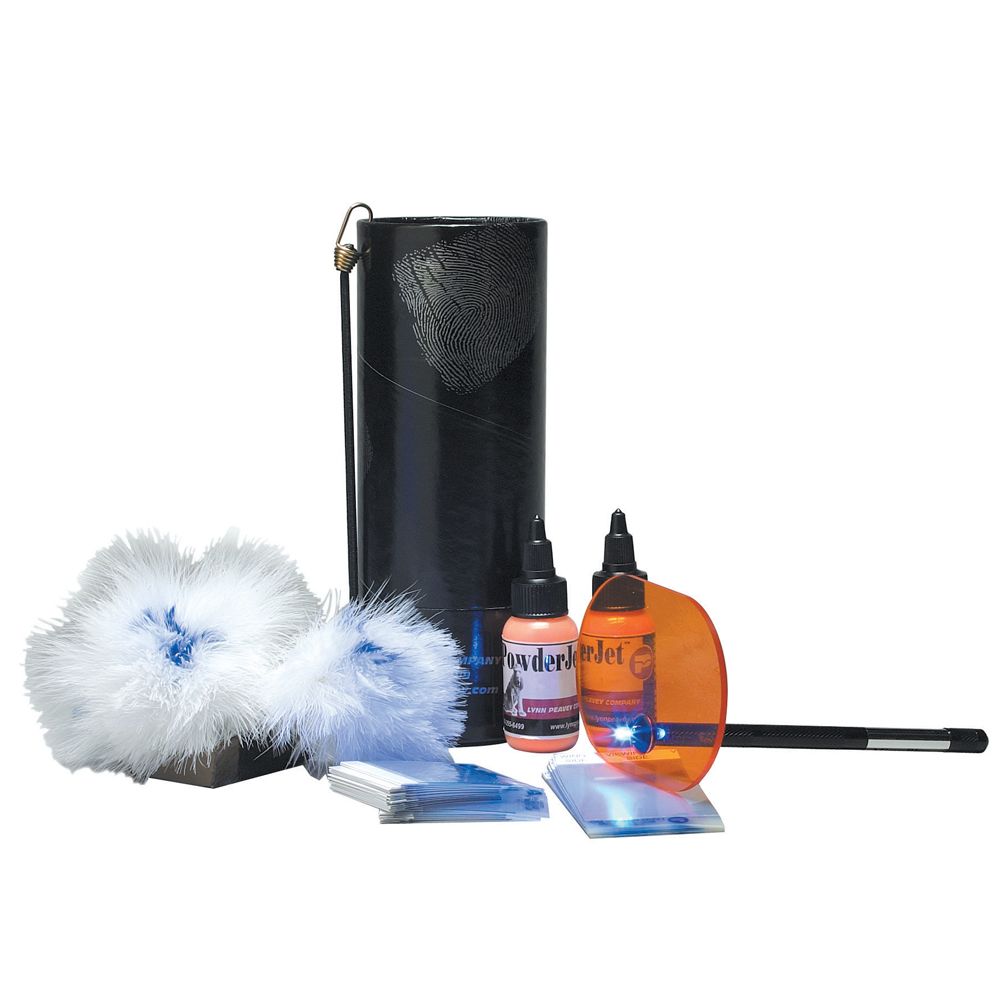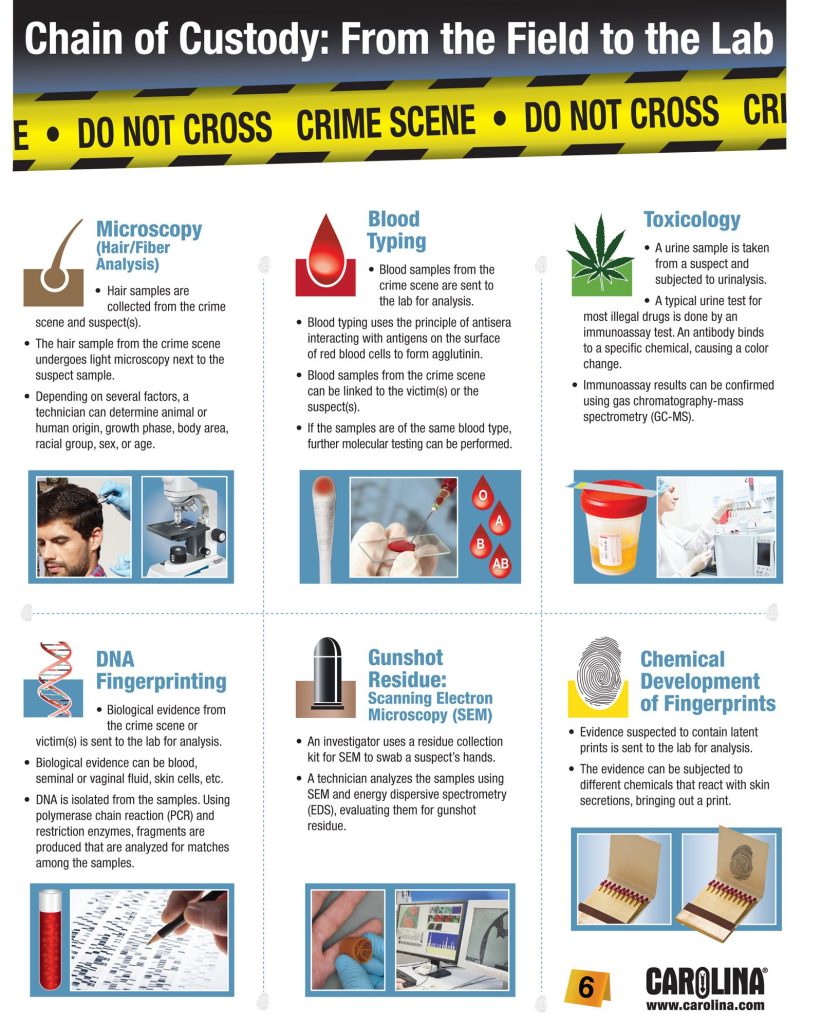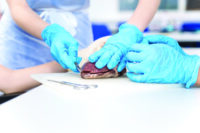Forensics is the interdisciplinary application of science to investigate and analyze evidence of historical, and most often criminal, events. In the classroom, training forensic scientists requires preparing students to be able to identify, compare, and analyze a breadth of evidence types using skills across biology, chemistry, and physics.
This guide provides information, products, free digital resources, and suggestions for teaching the most common types of evidence in forensic science. The types of evidence covered in this topic are:
Fingerprinting
Fingerprints are the impressions made on a surface from contact with a person’s fingertips. Because the patterns and ridges of human fingerprints are different between individuals, forensic investigators can use fingerprint evidence to make individual identifications. In the field, a variety of tools such as inks, powders, and chemicals are used to obtain and visualize prints. Below are just a few of the authentic forensics supplies Carolina offers for your fingerprint evidence investigations.
Carolina® Basic Fingerprinting Kit #212050
Beginning
Easy to Perform Requires little to no prior knowledge
Make your next classroom activity truly unique by having your students uncover their fingerprint patterns. A great introductory lesson for students of all backgrounds, this kit teaches about basic fingerprint patterns, minutiae, and the Henry system of classification.
Latent Print Development with Powders Kit #211850
Intermediate
Easy to Perform Requires some background knowledge
Give your students a real-life forensics experience as they discover the science of fingerprint development with powders. Students will develop fingerprints with magnetic powders and alternate light sources.
Chemical Development of Latent Prints #211875
Advanced
For experienced high school and college classes
Requires some technical skill and background knowledge
Give your students the opportunity to become crime scene technicians as they discover the science of latent fingerprint development. Students will develop fingerprints using ninhydrin and DFO in this activity.
Blood Evidence
Blood evidence is a diverse and multifaceted domain of forensics that provides opportunities for teaching a variety of subjects and techniques from chemistry, biology, and physics. Simulated Kastle-Meyer tests can be used to determine if an unknown sample is blood or a blood-like substance. Blood typing examines cell structures and immune functions to obtain useful class evidence on the blood type (A, B, AB, or O) of a sample. And the patterns of blood spatters found at a crime scene can be used to estimate the angle, velocity, and point of origin for a spatter. Whichever subject you use blood evidence for, we have you covered!
Blood Detection BioKit® #700136
Beginning
Easy to Perform Requires little to no prior knowledge
Blood-stained clothing is sometimes the only piece of evidence left at a crime scene. This simple test enables students to distinguish between human blood and substances that look like blood.
Carolina® Forensics Mystery with Synthetic Blood Kit #700113
Intermediate
Easy to Perform Requires some background knowledge
Students perform a simulated test for the presence of blood on evidence collected from 2 suspects in a murder case. They then use synthetic blood typing to test whether either suspect can be linked to the crime.
Bloodstain Pattern Analysis #211860
Advanced
For experienced high school and college classes
Requires some technical skill and background knowledge
Give your students the opportunity to become crime scene technicians as they analyze bloodstain patterns. Students will use trigonometry to determine angle of incidence and point of origin for a blood pattern.
Forensic Anthropology
When human remains are discovered at a crime scene, how do forensic investigators determine who died? How old they were? How tall? What biological sex? Forensic anthropology is the application of anatomy, physiology, and anthropology to determine the answer to these questions to aid in solving criminal cases. We offer detailed, replicated skeletal remains and activities for your students to engage with forensic anthropology in your classroom.
Identifying Skeletal Remains Kit #246734
Beginning
Easy to Perform Requires little to no prior knowledge
Students use basic science process skills to solve a mystery in this investigation-based introduction to skeletal anatomy and forensic anthropology. Students act as forensic scientists as they examine and identify a variety of bones, predict their origins, and make inferences based on observations and evidence collected at the crime scene.
Who Owns These Bones? Kit #246732
Intermediate
Easy to Perform Requires some background knowledge
How much can you learn about individuals by simply examining their bones? That’s what students find out as they become forensic detectives in a local missing person case. This forensics education kit comes with a set of 3 plastic bones (skull [with 3 removable teeth], arm bone, and leg bone) that were recently unearthed from a field near the school. After examining and identifying the bones, students use skeletal characteristics to determine as much information as possible about the person, including race, gender, and height.
Human Male Skull with a .32-Caliber Gunshot Wound #247125
Advanced
For experienced high school and college classes
Requires some technical skill and background knowledge
Cast from an original skull that is in a North American medical school forensic osteology teaching collection. The appearance of the projectile damage to bone is crucial in differentiating entrance and exit wounds.
Typically, as a projectile (such as a bullet) passes through a plate of bone, fragments of the bone follow. The result is a characteristic beveling (or open fanning) of the bone in the direction of projectile motion.
DNA Evidence
DNA is the gold standard of individual evidence because no two human genomes, except for those of identical twins, are identical. A common practice of DNA analysis for forensic investigations is to create and compare DNA fingerprinting profiles, which examine small regions of repetitive DNA that vary between individuals. Making DNA fingerprints often requires the use of gel electrophoresis, PCR, and other biotechnology techniques. We understand that knowledge of, and access to, biotechnology can vary from classroom to classroom, so our kits are designed to meet your unique needs, whether you’re a first-time teacher or a seasoned expert.
Exploring Electrophoresis and Forensics Classroom Kit #211014
Beginning
Easy to Perform Requires little to no prior knowledge
In this lab students learn about DNA analysis methods by performing gel electrophoresis to create simulated DNA fingerprints for use as evidence to solve a forensic case.
Students are presented with the crime scene, the suspects, the PCR process used to prepare the evidence, and are then asked to set up, run, and analyze an electrophoresis gel to determine whether one of the suspects is connected to the crime. The question that drives their investigation is, “How do we use DNA evidence, and what must be done in order to use it?”
DNALC Forensic DNA Fingerprinting Kit #211205
Advanced
For experienced high school and college classes
Requires some technical skill and background knowledge
This advanced lab uses plasmid isolation and restriction analysis to illustrate forensic DNA typing. Students are provided with 2 samples of E. coli cells to represent blood samples from 2 suspects. Plasmid DNA is extracted using a miniprep procedure and cut with restriction enzymes, along with a DNA sample representing the evidence from a crime scene.
Forensic PCR Investigation Kit #211400
Advanced
For experienced high school and college classes
Requires some technical skill and background knowledge
This kit takes your forensics class to the next level by giving students the opportunity to analyze DNA samples from a (fictitious) crime scene. Students immerse themselves in attempting to identify the culprit, learning more about DNA profiling and the role of tandem repeats in the analysis. They build on that knowledge with a hands-on investigation of the samples using PCR amplification and gel electrophoresis to help close the case.
Trace Evidence
Every contact between a suspect and a surface will result in a transfer of minute substances that can provide helpful trace evidence to investigators. Trace evidence can be either biological or physical, and each category of trace evidence has unique characteristics and investigatory techniques. From fibers to hair to glass, our kits can help your students become experts at analyzing trace evidence.
Fiber Identification Kit #699875
Intermediate
Easy to Perform Requires some background knowledge
Introduce forensic fiber identification techniques by challenging your students to identify an unknown fiber with this fiber identification kit. Students perform fiber diagnostic tests–such as burn tests, stain tests, microscope analysis, and more–to both reference fibers and an unknown fiber. Using the test results as evidence, students can conclusively identify the unknown fiber.
Diablo Highway: Hair Analysis Lab Kit #212282
Intermediate
Easy to Perform Requires some background knowledge
In this lab, students learn how to identify hair characteristics, including cuticle, cortex, medulla, and shape of the hair shaft. They also learn how to use a microscope and their unaided eyes to identify these characteristics. This activity includes all the tools teachers and students need to conduct the lab (except for microscope). Based on details from the Diablo Highway Kit (item #212188) crime scene, this lab can also be used as a stand-alone activity.
Physical Properties of Glass Kit #699852
Intermediate
Easy to Perform Requires some background knowledge
Every piece of evidence provides a clue about a crime. This kit shows the physical and chemical characteristics of different types of glass to illustrate how forensic scientists assemble evidence to solve crimes.
Ballistics and Toolmarks
If a crime involves a firearm, tool, or a scuffle, impressions will likely be left behind that, when analyzed, yield insights into what has occurred. Projectiles from firearms will leave impact that can be used to determine the trajectory and point of origin from their use. Tools such as pliers and screwdrivers, when struck on a surface, produce impressions that can be identified and traced to a unique tool. Shoe prints vary between shoe manufactories, making footwear prints a good source of class evidence. Below are just a few examples of kits that are sure to make an impression with your students.
Bullet Trajectory Investigation Kit #211865
Intermediate
Easy to Perform Requires some background knowledge
Students have the opportunity to learn and apply techniques used by crime scene technicians as they explore the science of bullet trajectories and shooting reconstruction.
Toolmark Identification Kit #212160
Intermediate
Easy to Perform Requires some background knowledge
Toolmark identification determines if a particular tool produced a mark when tools are used to commit a crime. The complete kit has everything your students need to become expert analysts of tools and the marks made by them. With 4 lab exercises based on actual cases encountered in crime laboratories and a detailed PowerPoint® lecture on the manufacturing of tools, students can experience the same type of training given to forensic scientists.
Footwear Identification and Casting Kit #211855
Intermediate
Easy to Perform Requires some background knowledge
Utilizing the same materials and tools as crime scene technicians worldwide, your students get an authentic first-hand experience with this activity. First, students make prints of their own shoes, using a special no-mess inkless shoe-print technology, to learn about pattern recognition. You then demonstrate the process of creating, cleaning, and handling a footwear cast using a no-mess, self-contained casting product designed specifically for crime scene field technicians.
Kits that Cover Multiple Forensic Topics
The Case of the Murdered Mayor Kit #699830
Intermediate
Easy to Perform Requires some background knowledge
Students assume the role of crime scene investigators as they use their observational skills and deductive reasoning to solve a realistic crime scenario. They attempt to identify a prime suspect from a pool of 6 alleged perpetrators using traditional forensic techniques.
Master Forensics Kit #212147
Intermediate
Easy to Perform Requires some background knowledge
Give your students a complete CSI experience with the Master Forensics Kit. Students will merge knowledge from biology, chemistry, and physics to conduct a detailed criminal investigation. This comprehensive kit introduces students to fingerprint analysis, hair analysis, soil analysis, ink analysis, document analysis, and drug and poisoning analysis.
Diablo Highway Kit #212188
Intermediate
Easy to Perform Requires some background knowledge
Based on the true-life double murder of Hazel Frome and her daughter Nancy, killed on a southwest Texas desert road in March 1938, this kit contains 10 forensic lab activities for middle and high school students. The activities promote objective-based learning that compels the application of science through real-world problem solving and is aligned with grade-appropriate NGSS.
Inquiries in Science®: Investigating Forensics #251024
Intermediate
Easy to Perform Requires some background knowledge
Introduce students to DNA forensics while solidifying their understanding of genetic principles. A crime scene offers opportunities for students to develop skills in presumptive blood testing, blood typing, and DNA fingerprinting. The advantages and disadvantages of these techniques and other common forensic tests are investigated. Finally, students use what they’ve learned about the evidence to solve the case.
Crime Scene Supplies
Be prepared to examine biological and physical evidence with forensics supplies. We have forensic resources for fingerprinting, crime scene documentation, evidence collection, impressions, UV illumination, and much more!
Free Forensic Resources
Use these resources and activities to supplement your instruction.
Forensic Science Videos
Looking for some support for your forensic science labs? These videos can help.
Buying Guide
Use this guide to help you select products for your forensic science classroom.
For More Guidance
These are our top picks. If you don’t see what you’re looking for, we’ll be happy to help you find the right activities and kits to simplify your planning and implementation. If you have questions, please contact us at product@carolina.com.




